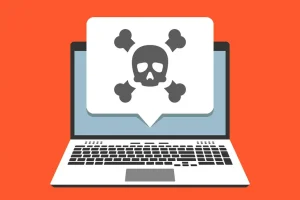The Webcord Virus is one of the latest threats in the realm of cybersecurity, representing a sophisticated evolution in malicious software designed to exploit vulnerabilities in web-based applications. As the digital landscape continues to expand and integrate more deeply into our daily lives, understanding the mechanisms, impact, and prevention strategies related to such viruses becomes crucial. This guide aims to provide a comprehensive overview of the Webcord Virus, including its origins, modus operandi, and the measures that can be taken to protect against it.
Origins and Evolution
The Webcord Virus is believed to have originated from a group of highly skilled cybercriminals who aimed to exploit the growing reliance on web-based communication and collaboration tools. Initially detected in late 2022, the virus has undergone several iterations, each more sophisticated than the last. The primary target of the Webcord Virus includes both individual users and large organizations, exploiting vulnerabilities in web browsers, plugins, and applications to gain unauthorized access to sensitive information.
Unlike traditional viruses that might attach themselves to files or systems, Webcord operates within the web environment, making it particularly insidious and difficult to detect. It leverages weaknesses in the web architecture, such as cross-site scripting (XSS) and SQL injection, to infiltrate systems and propagate across networks.

How the Webcord Virus Works
The Webcord Virus employs a multi-faceted approach to infiltrate and exploit web-based environments. Here are the primary methods it uses:
- Phishing Attacks: One of the most common methods used to spread the Webcord Virus is through phishing emails. These emails are crafted to appear legitimate, often mimicking well-known companies or institutions. Once the recipient clicks on a malicious link or downloads an infected attachment, the virus is activated.
- Exploiting Web Vulnerabilities: The virus takes advantage of known vulnerabilities in web applications, such as XSS and SQL injection. By injecting malicious code into a website, the virus can compromise the site and spread to its users.
- Malicious Browser Extensions: The Webcord Virus can also be spread through seemingly benign browser extensions. These extensions may appear to offer useful functionalities but are actually designed to steal data or perform unauthorized actions once installed.
- Man-in-the-Middle Attacks: This sophisticated method involves intercepting communication between a user and a web service. The Webcord Virus can alter or steal data in transit, making it particularly dangerous for financial transactions and sensitive communications.
Impact on Individuals and Organizations
The impact of the Webcord Virus can be devastating, affecting both individuals and organizations. Here are some of the key consequences:
- Data Theft: The primary goal of the Webcord Virus is to steal sensitive information, such as login credentials, financial data, and personal information. This data can be sold on the dark web or used for further criminal activities.
- Financial Loss: For organizations, the financial implications of a Webcord Virus attack can be significant. This includes the cost of remediation, legal fees, and the potential loss of business due to damaged reputation.
- Operational Disruption: The virus can disrupt normal business operations by causing website downtimes, data corruption, and loss of productivity. In some cases, critical systems may be rendered inoperable.
- Legal and Compliance Issues: Organizations that suffer a breach due to the Webcord Virus may face legal actions and fines, especially if they are found to be non-compliant with data protection regulations such as GDPR or CCPA.
Prevention and Protection Strategies
Preventing and protecting against the Webcord Virus requires a multi-layered approach, combining technical defenses with user awareness and best practices. Here are some key strategies:
- Regular Software Updates: Ensure that all software, including web browsers and plugins, are regularly updated to patch known vulnerabilities.
- Robust Security Software: Use reputable antivirus and anti-malware software that includes web protection features. These tools can help detect and block malicious websites and files.
- Educating Users: Training employees and users to recognize phishing attempts and the dangers of downloading unknown files or clicking on suspicious links is crucial.
- Implementing Web Security Measures: Employ web application firewalls (WAF) and intrusion detection/prevention systems (IDS/IPS) to protect against web-based attacks.
- Regular Backups: Maintain regular backups of critical data to ensure that information can be restored in the event of a cyberattack.
- Strong Authentication: Use multi-factor authentication (MFA) to add an additional layer of security for accessing sensitive systems and data.
FAQs
Q: What is the Webcord Virus?
A: The Webcord Virus is a sophisticated form of malware designed to exploit vulnerabilities in web-based applications and environments, primarily aiming to steal sensitive information and disrupt operations.
Q: How does the Webcord Virus spread?
A: It spreads through various methods, including phishing attacks, exploiting web vulnerabilities like XSS and SQL injection, malicious browser extensions, and man-in-the-middle attacks.
Q: Who is at risk from the Webcord Virus?
A: Both individual users and organizations are at risk, especially those who rely heavily on web-based applications and services.
Q: What are the common signs of a Webcord Virus infection?
A: Common signs include unexpected changes in web application behavior, unauthorized access to sensitive information, unusual network traffic, and frequent crashes or slowdowns in systems.
Q: How can I protect my organization from the Webcord Virus?
A: Protect your organization by regularly updating software, using robust security software, educating users on recognizing threats, implementing web security measures, maintaining regular backups, and using multi-factor authentication.
Q: What should I do if I suspect a Webcord Virus infection?
A: If you suspect an infection, immediately disconnect affected systems from the network, run a comprehensive antivirus scan, consult cybersecurity professionals, and report the incident to relevant authorities.
conclusion
the Webcord Virus represents a significant threat in today’s digital world. Understanding its mechanisms and impact is the first step in defending against it. By implementing robust security measures and fostering a culture of cybersecurity awareness, individuals and organizations can better protect themselves from this and other evolving cyber threats.



